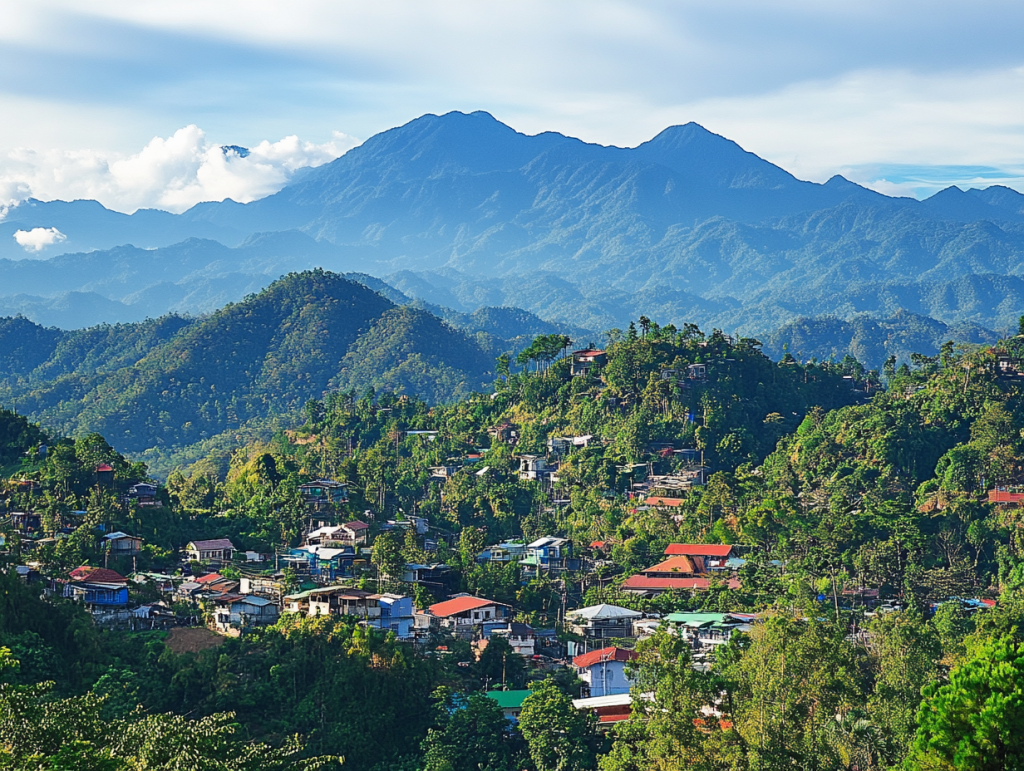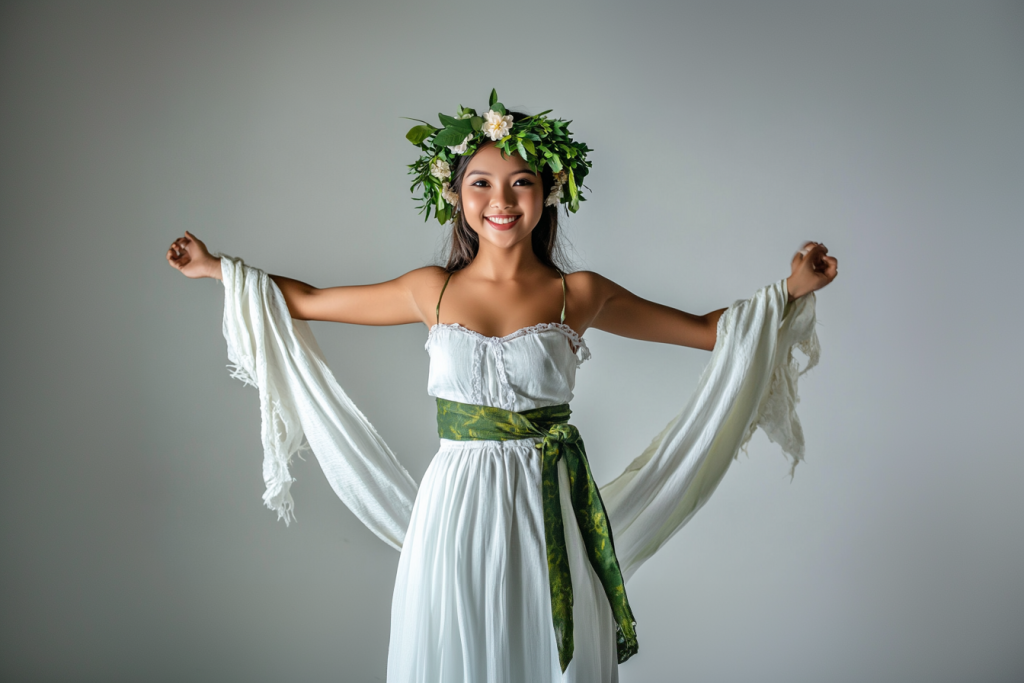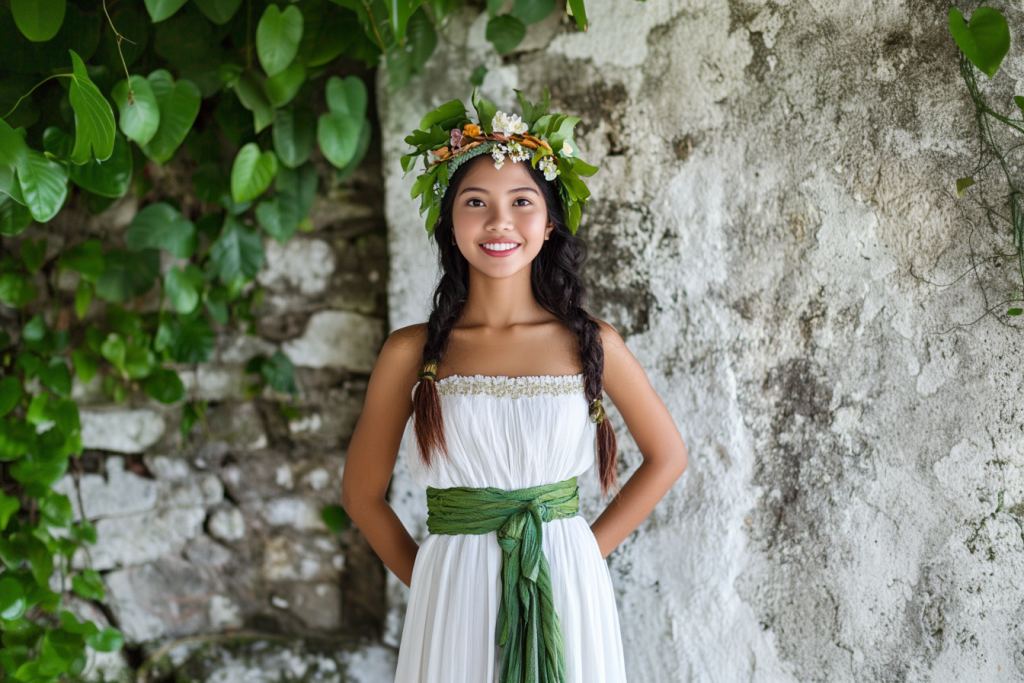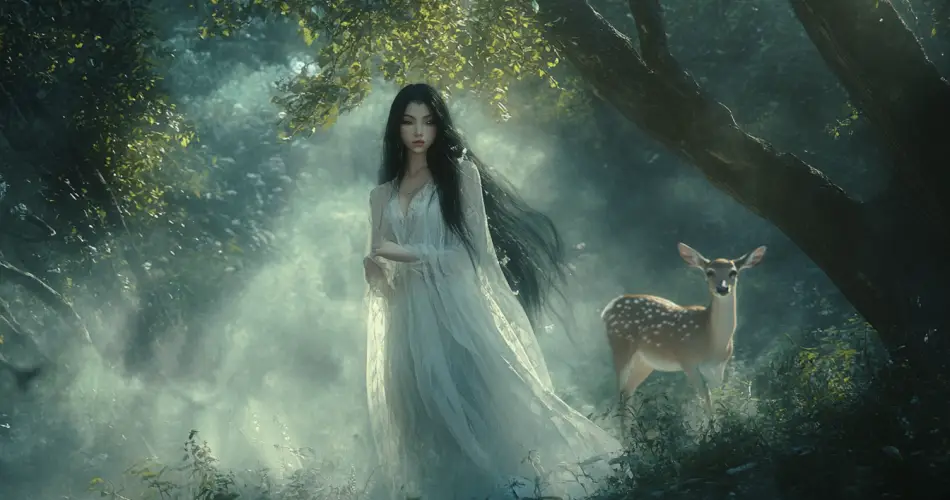The legend of Maria Makinling is one of the most fascinating legends in Philippine mythology. Known as a guardian of nature and everything within it, Maria Makiling is a Diwata that is believed to live on the slopes of Mount Makiling in Laguna province of the Philippines.
The story of Maria Makiling has been told by the Tagalog people for thousands of years, and it still remains an important part of their culture today.
Who is Maria Makiling?
Maria Makiling is a Diwata (Nature spirit) that is believed to live on Mount Makiling and protect the forest and natural resources of the area. Before the colonization of the Philippines, she was worshipped as Dayang Masalanta and invoked by the local tribes to prevent natural disasters like Earthquakes, floods, and storms.
According to the Tagalog story of Makilling, the supreme god Bathala sent her to watch over the people who depended on the mountain and provide them with everything they needed.
The name Maria Makiling comes from the Spanish phrase “Maria ng Makiling,“ meaning “Maria of Makiling.” The Spanish adopted this unique name for the deity in an attempt to rebrand her as the Virgin Mary of the Catholic Church.
Today, the legend of Maria Makiling portrays her as a beautiful young woman with flowing hair, clear skin and simple clothing. She is also known for her immense kindness and generosity towards people who live around the Makiling mountain.
Tagalog Stories of Maria Makiling
There are several Tagalog folk stories featuring Maria Making. In most of these stories, the diwata is portrayed as kind and benevolent. However, in other stories, Maria Makiling is portrayed as a young woman who is unlucky in love.
Here are some popular Tagalog stories of Maria Makiling;
The Story Maria Makiling and the Hunter

This story was recounted by a Tagalog hunter who claimed to have had a face-to-face encounter with Makiling herself.
According to him, he was hunting a wild boar in the forest on Makiling Mountain, where the Diwata is believed to live. The boar suddenly crashed into some bushes, and the hunter, fearing he would lose it, dived after it. He missed it and saw the boar run into a lone hut in the forest.
Thinking that the hut was deserted, the hunter followed the boar inside. To his greatest surprise, he saw a beautiful maiden standing by the boar. The animal had run to the woman for protection.
The maiden instructed him not to harm the boar and invited him inside for some food. The hunter felt compelled to obey. After a meal of hot porridge, the woman gave him a basket of ginger as compensation for his loss.
As the man walked home, he felt the basket of ginger growing heavier, so he broke some off and threw them away. When he got home, he handed the ginger basket to his wife, who found out that the ginger in the basket had turned to gold. The man regretted throwing some of the precious ginger away.
Read Also: Terrifying Vampire Bird in Philippine Mythology.
The Story of Maria Makiling and the Three Suitors
Once upon a time, Maria Makiling lived among the people as a young married Maiden. She was the most beautiful woman in the area, and many men wanted to marry her. Among her many suitors were Captain Lara, a Spanish soldier; Joselito, a Spanish Mestizo; and Juan, a common farmer.
The three men spent much time with Makiling, bringing her gifts and other nice things. When Makiling finally made her choice, it was Juan who was chosen. Captain Lara and Jeselito believed themselves to be better candidates and were angry at Juan.
The two men devised a plan to get rid of the poor farmer. Together, they secretly set fire to the Spanish military barracks and blamed Juan for it. The farmer was promptly arrested and executed.
However, before Juan died, he called on Maria Makiling’s name. The diety came rushing over, and when she discovered what had happened, she cursed the two evil men.
The curse soon took effect. Joselito, the Spanish soldier, was killed by his own people during an indigenous revolution. Captain Lara also contracted an incurable disease and died a painful death.
The Makiling returned to the Mountain forest and was never seen again.
Maria Makiling Mountain

Mount Makiling is a dormant volcano mountain located in the province of Laguna and on the Island of Luzon in the Philippines.
According to Tagalog belief, the spirit of Maria Makiling lives on the mountain, and it serves as a guardian and protector of the mountain and everything on it.
From a distance, Mount Makiling is shaped like a woman in a reclining position, with three contours separated by slopes. These contours are believed to represent Maria Makiling’s head and breasts. Also, the white mists that surround the mountain are interpreted as Maria Makiling’s flowing white garment.
Maria Makiling lives in a small hut on the mountain. No one can ever find the Hut of Maria Makiling unless she allows it.
For the local Tagalog community, Maria Makiling Mountain is spiritually significant. The mountain’s rich forest, bubbling springs, and fertile soil are believed to be blessings from her.
The diwata provides these resources for people to use; however, they should be used in moderation. Any overexploitation of the mountain angers Makiling and invites misfortune.
Maria Makiling’s Appearance: Costume and Symbolism
According to Tagalog folklore, Maria Makilig is a beautiful young woman with dark hair and piercing black eyes. She has clear, smooth skin and is often shown in plain white clothes.
Maria Makiling Custome

In Philippine cultural festivals and performances, young girls are dressed in elegant Maria Makiling costumes to represent their character visually. These costumes require very little materials and are very easy to set up.
Materials that might be needed to make a realistic Maria Makiling costume include;
- A wide-flowing white dress
- Small green fabric
- Headband made from leaves or any crawling plant.
That is all. Put on the white dress, tie the green fabric around your waist, and decorate your hair with the leaves. The white dress represents the diwata’s purity and peace-loving nature, while the green fabric and the hair decoration illustrate her connection to nature.
Combining these three simple materials will capture Maria Makiling’s identity as a kind, peaceful Diwata and a protector of the environment.
These costumes are not just about aesthetics; they are a representation of Maria’s identity.

Maria Makiling in Modern Culture
The story of Maria Makiling is not just a relic of the past; it still holds significant cultural significance in modern times. Her image is still widely invoked worldwide, from art to literature to environmental consciousness.
Maria Makiling as a Symbol for Environmental Preservation
The traditional role of Maria Makiling as a protector of the natural environment fits perfectly into the agenda of environmentalists pushing to stop the indiscriminate exploitation of natural resources and the pollution of the environment.
Her image is used in campaigns in the Philippines to push back this destructive overexploitation of nature.
Maria Makiling as an Icon of Feminism.
Traditionally, Maria Makiling is a powerful female figure who is also very kind. She indiscriminately extends her kindness to everyone and maintains her autonomy even after her romantic heartbreaks.
This is interpreted to be an ideal representation of what feminism should be. Women are encouraged to take inspiration from Makiling. A woman does not need a man to be powerful.
Makiling in Pop Culture Adaptations
Maria Makiling has appeared in various forms of modern entertainment, including film, television, music, and comics. These illustrations range from traditional retellings of her story to more modernized or even science-fiction versions that resonate with contemporary audiences.
The legend has also been adapted into graphic novels, fantasy-themed TV shows, and even video games, making the story accessible to younger generations.
Tourism and Cultural Heritage
Mount Makiling itself has become a cultural and ecological tourism spot in the Philippines. The mountain is not only a place of scenic beauty but also a pilgrimage site for those intrigued by the myth of Maria Makiling.
According to the Philippine Department of Tourism, more than 10,000 people visit Mount Makilling annually.
Conclusion
Maria Makiling’s legend has endured because of the message it conveys. The ancient Tagalog tribes understood the importance of nature and the need to respect and protect the environment.
They have passed this wisdom to us through this amazing legend. It is our responsibility to follow in their footsteps using our technology and resources. This will help ensure that future generations will enjoy the beauty of nature as we enjoy it today.
Today, through stories, art, or visits to Mount Makiling, the legend of Makiling continues to symbolise nature’s beauty and strength.
